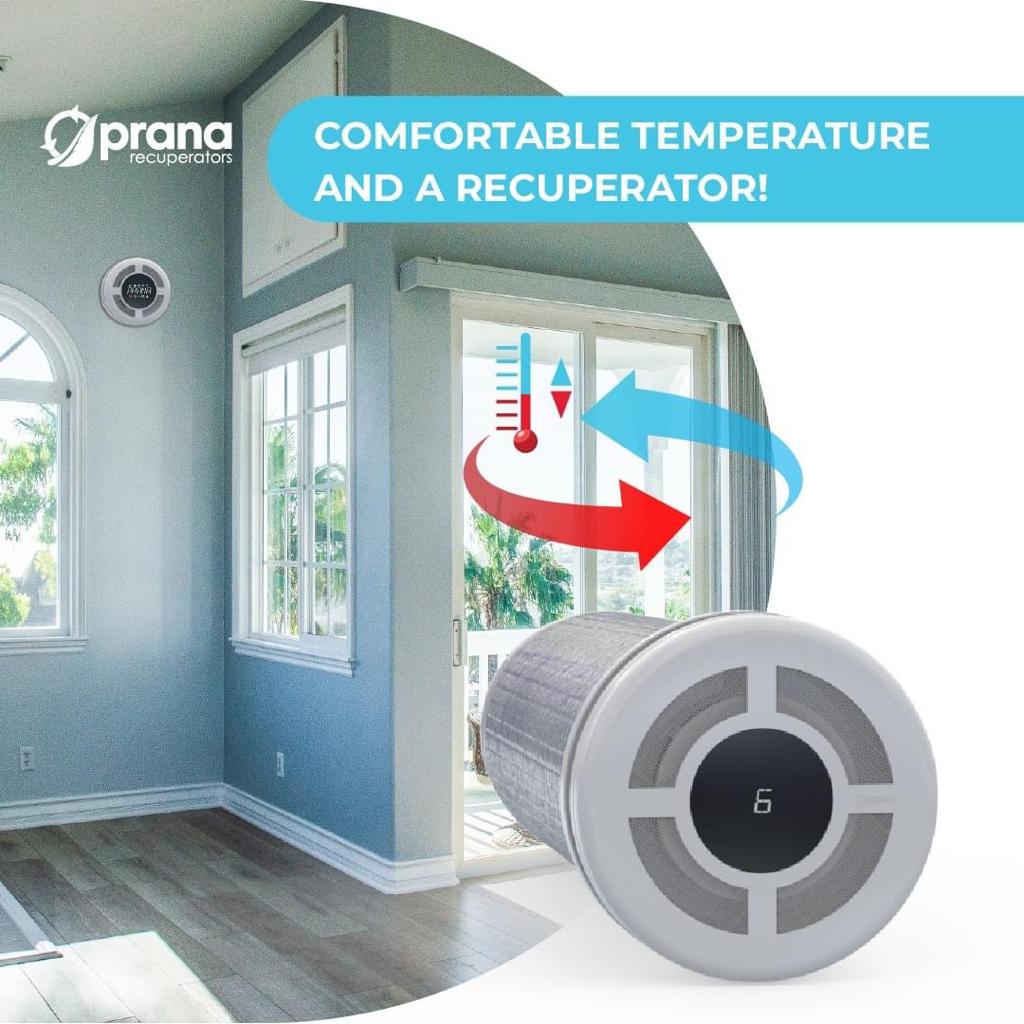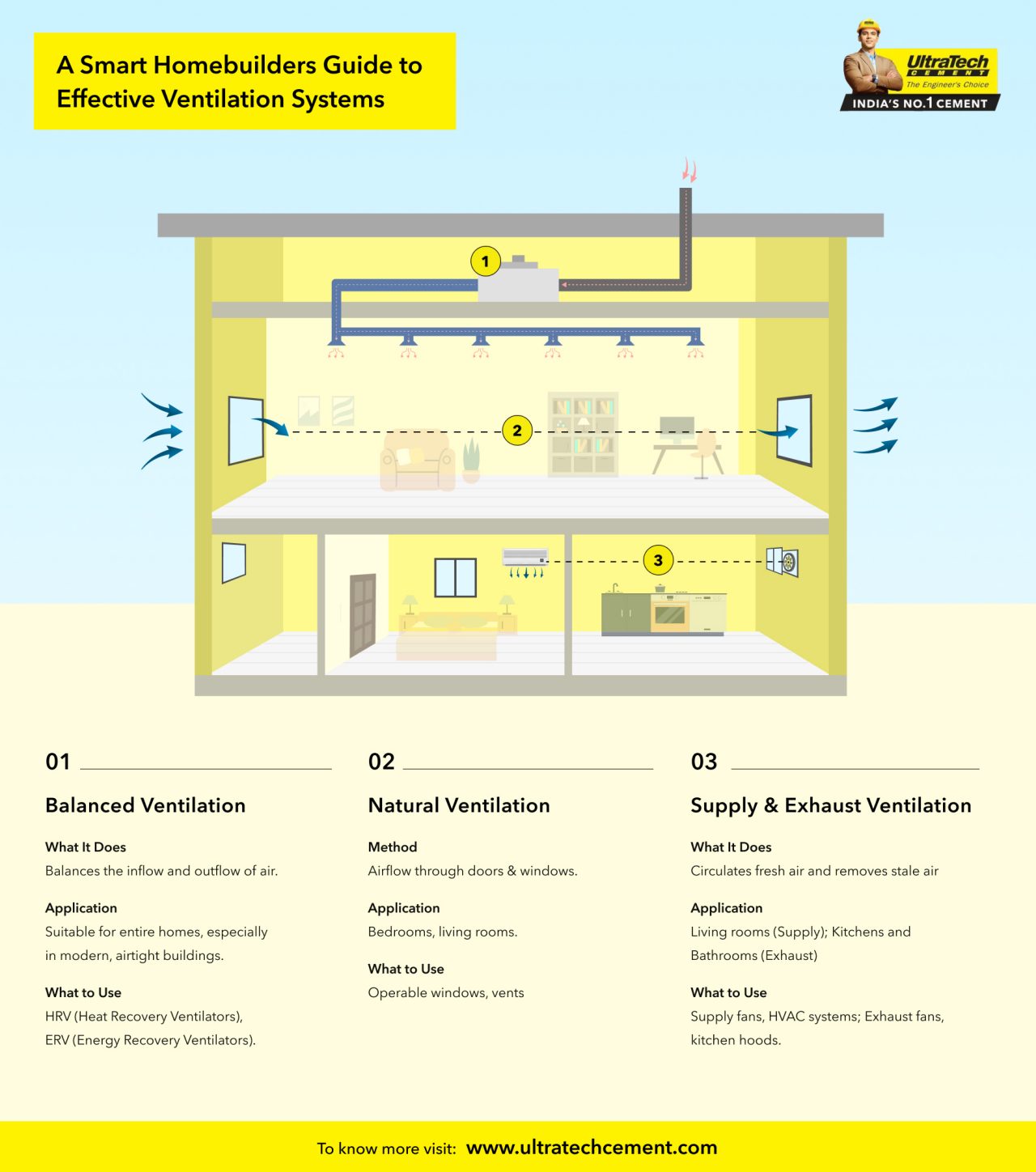Professional Tips for Maintaining Home Ventilation Melbourne Systems
Exploring Ingenious Solutions for Ideal Home Air Flow Solutions
Home air flow plays a vital function in preserving health and wellness and convenience within living rooms. With innovations in modern technology, cutting-edge services are emerging to optimize these systems. Smart ventilation, power recuperation ventilators, and advanced filtration are reshaping just how air high quality is handled - Home Ventilation Melbourne. However, the integration of these technologies elevates concerns about their effectiveness and flexibility in different home atmospheres. What ramifications do these advancements hold for future living standards?
The Importance of Home Air Flow for Health and Comfort
Although frequently overlooked, home air flow plays a necessary role in keeping both health and wellness and comfort within residential rooms. Appropriate ventilation is essential for the flow of fresh air, which aids to weaken indoor contaminants such as volatile natural substances, irritants, and smells. Without correct airflow, these pollutants can gather, resulting in breathing problems and other illness. In addition, efficient ventilation adds to managing humidity degrees, preventing mold growth and architectural damages. By making certain a well balanced exchange of air, residents can delight in a much more positive interior setting, boosting overall wellness. Additionally, appropriate air flow can enhance power performance by reducing the requirement for extreme heating or cooling, eventually leading to lower energy costs and an extra lasting home.
Smart Air Flow Solutions: Harnessing Modern Technology for Effectiveness
Smart air flow systems represent a significant improvement in home air management, leveraging IoT combination for boosted control. These systems not only advertise power efficiency yet likewise offer remote tracking capacities, allowing individuals to maximize their indoor settings perfectly. By harnessing innovation, property owners can achieve enhanced air top quality while reducing energy intake.
IoT Integration Benefits
Exactly how can IoT assimilation change traditional ventilation systems right into highly efficient wise options? By integrating Web of Points (IoT) technology, ventilation systems can accomplish real-time tracking and control, boosting their functional performance. Sensing units placed throughout a home gather data on air high quality, humidity, and temperature level, permitting for automated changes based upon current conditions. This immediate responsiveness results in improved interior air high quality and convenience degrees. On top of that, IoT-enabled systems can connect with various other wise home devices, creating a natural ecosystem that maximizes power use. Users can additionally accessibility and handle their air flow systems from another location by means of mobile phones, providing convenience and raised control. Generally, IoT integration represents a substantial development, bringing intelligence and flexibility to standard ventilation methods.
Energy Efficiency Features
As power efficiency comes to be an essential focus in modern-day home style, advanced ventilation systems use ingenious attributes that considerably decrease power usage. These smart ventilation systems use sensing units to keep an eye on interior air moisture, top quality, and temperature degrees, immediately readjusting airflow to preserve excellent conditions. By using power recovery ventilators (ERVs), they catch and recycle energy from outbound air, minimizing heating and cooling demands. Variable rate followers better enhance performance by adjusting their operation based on real-time requirements, protecting against unnecessary energy waste - Home Ventilation Melbourne. In addition, programmable timers and tenancy sensors ensure that air flow runs just when essential, adding to reduced energy costs. Jointly, these attributes stand for a significant improvement in creating energy-efficient and lasting living environments
Remote Monitoring Capabilities
What advantages do remote tracking abilities give contemporary home ventilation systems? These capabilities allow house owners to track interior air top quality and system efficiency in genuine time, improving general effectiveness. By offering data on temperature, air, and humidity pollutants, clever ventilation systems enable proactive modifications, making sure optimal conditions. Additionally, remote surveillance assists in maintenance informs, determining potential concerns before they rise, therefore minimizing repair service expenses and downtime. Users can access system analytics via mobile applications, enabling convenient control also when away from home. This technical combination not only advertises energy effectiveness but additionally contributes to a much healthier living atmosphere. Ultimately, remote tracking capabilities represent a substantial innovation in home ventilation, straightening with the growing need for clever home innovations.
Power Recovery Ventilators: Optimizing Energy Cost Savings
Power recovery ventilators (ERVs) play a crucial role in boosting home energy performance through efficient warm exchange. By moving thermal energy between inbound and outgoing air, these systems noticeably lower overall energy usage. This cutting-edge strategy not just keeps interior air quality but likewise adds to lower energy prices.
Performance of Heat Exchange
While preserving indoor air high quality is crucial for health and comfort, the performance of warm exchange in power recuperation ventilators (ERVs) plays an important role in optimizing power cost savings. The key feature of an ERV is to transfer warm and wetness between incoming and outgoing air streams, which optimizes indoor problems while decreasing power loss. High-efficiency heat exchangers can considerably reduce the load on home heating and cooling down systems by recovering energy that would otherwise be squandered. The effectiveness of these systems is typically measured by their core temperature exchange prices, which can differ based on style and materials used. By focusing on innovative warm exchange innovations, property owners can improve their ventilation systems, leading to boosted energy efficiency and price reductions over time.
Decreased Power Usage
Minimizing power usage is a key advantage of energy recuperation ventilators (ERVs), as they successfully imp source reuse thermal power from tired air. By moving warm in between incoming and outward bound air streams, ERVs lessen the need for extra home heating or cooling, causing substantial energy financial savings. This process not just lowers energy costs yet also minimizes the ecological impact connected with greater power use. On top of that, ERVs keep consistent indoor air top quality without compromising thermal convenience, creating a well balanced living setting. By incorporating ERVs into home ventilation systems, home owners can achieve better energy effectiveness, making it possible for a lasting approach to indoor air administration while gaining from lower power costs. Inevitably, ERVs stand for an engaging solution for energy-conscious consumers.
Advanced Filtering Technologies for Cleanser Indoor Air
As indoor air quality becomes progressively acknowledged as a critical component of health and health, progressed purification technologies are emerging as vital tools for making sure cleaner atmospheres. These innovations include high-efficiency particulate air (HEPA) filters, triggered carbon filters, and electrostatic precipitators, each developed to efficiently catch airborne contaminants, allergens, and unstable organic compounds (VOCs) HEPA filters can catch fragments as tiny as 0.3 microns, substantially reducing allergens like allergen and pet dog dander. Triggered carbon filters stand out in adsorbing odors and chemical vapors, adding to a fresher indoor ambience. In addition, electrostatic precipitators utilize electrical charges to get rid of bits, offering an energy-efficient choice. By integrating these sophisticated purification systems, house owners can enhance interior air high quality and promote much healthier living rooms.
The Role of Sensing Units in Maximizing Air Flow and Quality
Exactly how can sensors transform the monitoring of interior air top quality? Sensors play a vital role in improving air movement and improving interior atmospheres. By continually keeping an eye on elements such as moisture, temperature level, and levels of toxins, they offer real-time information that informs air flow systems. This information allows automatic adjustments to air flow, ensuring appropriate circulation and reducing the build-up of contaminants. In addition, advanced sensing units can spot certain air top quality issues, triggering prompt feedbacks to enhance comfort and health and wellness. The assimilation of these tools into ventilation systems enables an extra reliable and receptive management method, minimizing power intake while preserving ideal air quality. Eventually, sensing units offer as a critical component in creating healthier interior rooms through specific air movement law.
Integrating Air Flow With Smart Home Solutions
While several homeowners look for convenience and performance, incorporating air flow systems with wise home innovation provides an Find Out More ingenious service to managing indoor air top quality. By attaching air flow systems to smart home hubs, residents can automate air top quality surveillance and control air flow based on real-time data. These systems can react to adjustments in humidity, contaminant, and temperature level levels, making certain perfect interior problems. Smart thermostats can operate in tandem with air flow systems to improve power effectiveness, reducing prices while preserving convenience. House owners can also from another location control their air flow settings via mobile apps, providing adaptability and comfort. Inevitably, this integration not just streamlines management yet significantly boosts the general living setting, making it a beneficial addition to contemporary homes.
Future Fads in Home Ventilation Solutions
Arising technologies and increased awareness of indoor air top quality are shaping the future of home air flow options. One substantial pattern is the assimilation of synthetic knowledge, enabling systems to change air flow based on real-time information and tenancy patterns. Furthermore, power recuperation ventilators are acquiring traction, providing effective air exchange while reducing power loss. Using eco-friendly materials and styles is likewise increasing, lining up with sustainability objectives. Smart sensing units that monitor pollutants and humidity levels are becoming requirement, allowing home owners to keep ideal indoor environments. Scalable and modular systems are emerging, offering adjustable choices for different home sizes and configurations. Together, these advancements assure to boost convenience, performance, and health in household rooms
Often Asked Concerns
How Often Should I Clean My Home Air Flow System?

The frequency of cleaning a home air flow system differs based on usage and atmosphere. Typically, it is recommended to cleanse the system every three to six months to keep suitable air high quality and system effectiveness.
Can Poor Ventilation Reason Mold Growth Inside?

What Are the Indicators of Inadequate Home Air Flow?
Signs of inadequate home air flow consist of persistent smells, enhanced humidity levels, condensation on windows, visible mold and mildew growth, and a basic feeling of stodginess. These indicators often recommend that air circulation is inadequate for maintaining a healthy and balanced indoor atmosphere.
Just How Can I Enhance Air Flow in Older Residences?
To improve air flow in older homes, one could think about mounting exhaust fans, using all-natural airflow with home windows, sealing voids for much better air control, and incorporating air purifiers to improve interior air quality successfully.
Are Do It Yourself Ventilation Solutions Effective and Safe?

Smart ventilation, energy healing ventilators, and advanced purification are improving exactly how air high quality is taken care of. As power efficiency becomes a critical emphasis in modern home style, progressed ventilation systems supply innovative attributes that considerably minimize energy intake. By incorporating ERVs right into home ventilation systems, property owners can achieve better energy efficiency, enabling a sustainable approach to indoor air management while profiting from lower power expenses. The combination of these devices right into air flow systems enables for an extra reliable and responsive monitoring approach, minimizing power consumption while keeping optimal air quality. While many homeowners look for benefit and effectiveness, incorporating air flow systems with clever home modern technology provides a cutting-edge option to managing indoor air quality.